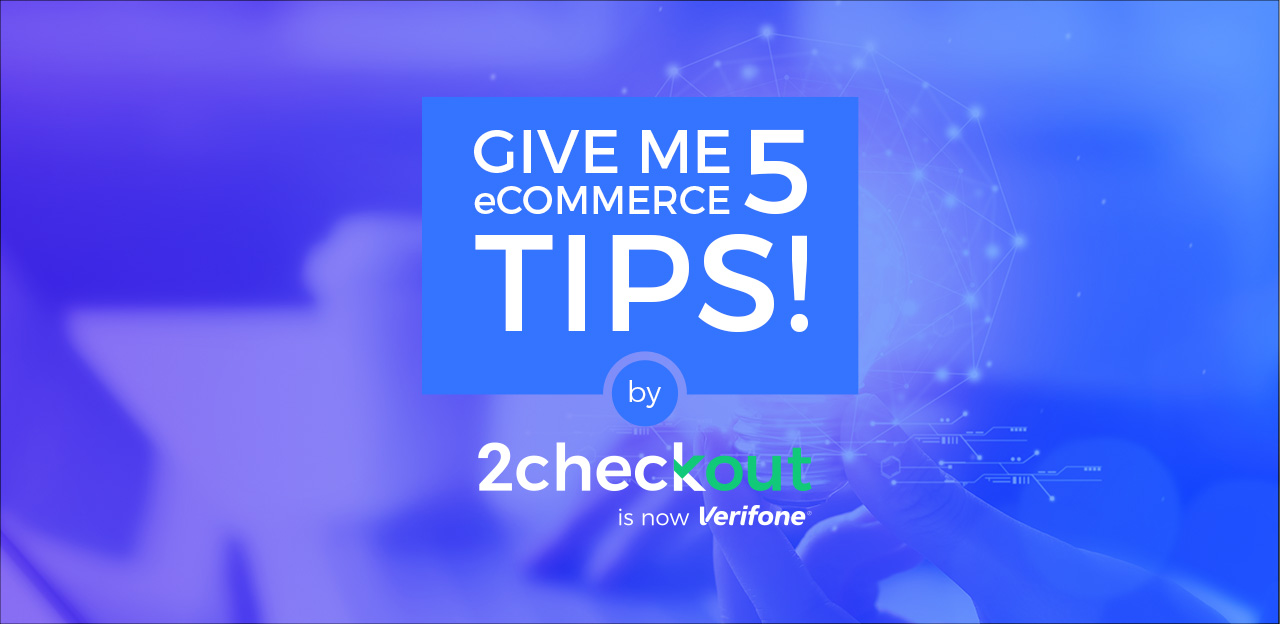Hello, everybody! Welcome to a new episode of our Give me 5! series, where we share 5 useful digital commerce tips that will ensure you have a bulletproof onboarding & activation strategy in times of crisis.
In this episode, Deborah Preston, 2Checkout’s Global Head of Customer Success, will be walking you through five tips that will help your business improve onboarding, activation and client retention.
1. Communicate efficiently with users
When users reach out to you, be ready to provide them with the advice they need to get to the value of your product. But don’t leave it only up to them, be proactive in your communication strategy: make sure all the information they need to succeed is readily available. For example, when users sign up, send them a welcome email. Then, guide them throughout onboarding – first, through a user-friendly interface and intuitive onboarding – that entices them to use your product right away to reach their goal.
Here’s how to help users get the most out of your product:
- provide a list of Frequently Asked Questions
- share product tutorials and documentation
- put together a team ready to jump on calls to chat or offer needed trainings
- reinforce their end goals and priorities.
2. Pick a star feature of your product
When users sign up for a free trial or freemium version, they want to see if that product is a good fit for them. So when they get to actually use it, try optimizing (i.e. slim down) their onboarding and only highlighting a feature or two that you know will convince them to keep digging, based on their specific needs and goals (versus presenting them with full product features). If you’re not sure what your users want to do first with your product, analyze their behavior with analytic tools, or even just ask them.
3. Don’t push for upgrading straight away
It’s one thing to help people discover your product. It’s another to push them around in this journey and persist with upgrades or paid versions when they are already getting it free. Be patient, let them take their time with the product and avoid nagging them with a lot of emails. For example, don’t send multiple emails to present standalone features – send a single email with highlights instead. Do your best to make sure you are clearly highlighting the value you bring to the table rather than just asking for money. And remember, the true “Aha moment” has to be natural. Better to invest more resources into optimizing your app, and make usage easy.
4. Make the process simple
This is the perfect opportunity to eliminate unnecessary onboarding steps. Make the visitor’s journey to achieve their business goals and desired outcomes as quick and easy as possible. Our findings show even removing one extra step from the initial onboarding process can lead to a 20% boost in monthly recurring revenue.
Here’s how to reduce any friction the user may experience with your product:
- let users activate via email confirmation later or simply automate activation
- reduce unnecessary form fields
- don’t ask for credit card details right away
- avoid sending too many emails
- remove visual friction.
5. Perform an audit on your onboarding
A crisis is also a good time to perform an audit on your onboarding, so that you can identify critical usability flaws and reduce the friction in your onboarding process. Start with investigating the friction that appears from the moment a user signs up for a trial, to the moment they reach that first moment of value, and then monitor ongoing usage behavior. Ask for feedback from your users, observe how their first experience with the product goes, and use A/B testing solutions to find your winning strategy. Look at the behavior of your highest value clients and understand what they do within your app and what their lead sources are, and optimize your acquisition strategy based on retention insights.
To conclude, use this crisis as an opportunity to improve your onboarding experience and in the end, you’ll see how your overall revenue will go up as well.
Thanks a lot for watching, we hope you enjoyed this video! Feel free to share any suggestions or other tips in the comments below, and we’ll see you next time, with useful tips to help your eCommerce business thrive!
Want some extra tips that will help you keep your sales strong during a crisis? You can watch our previous “Give me 5!” episode here!






